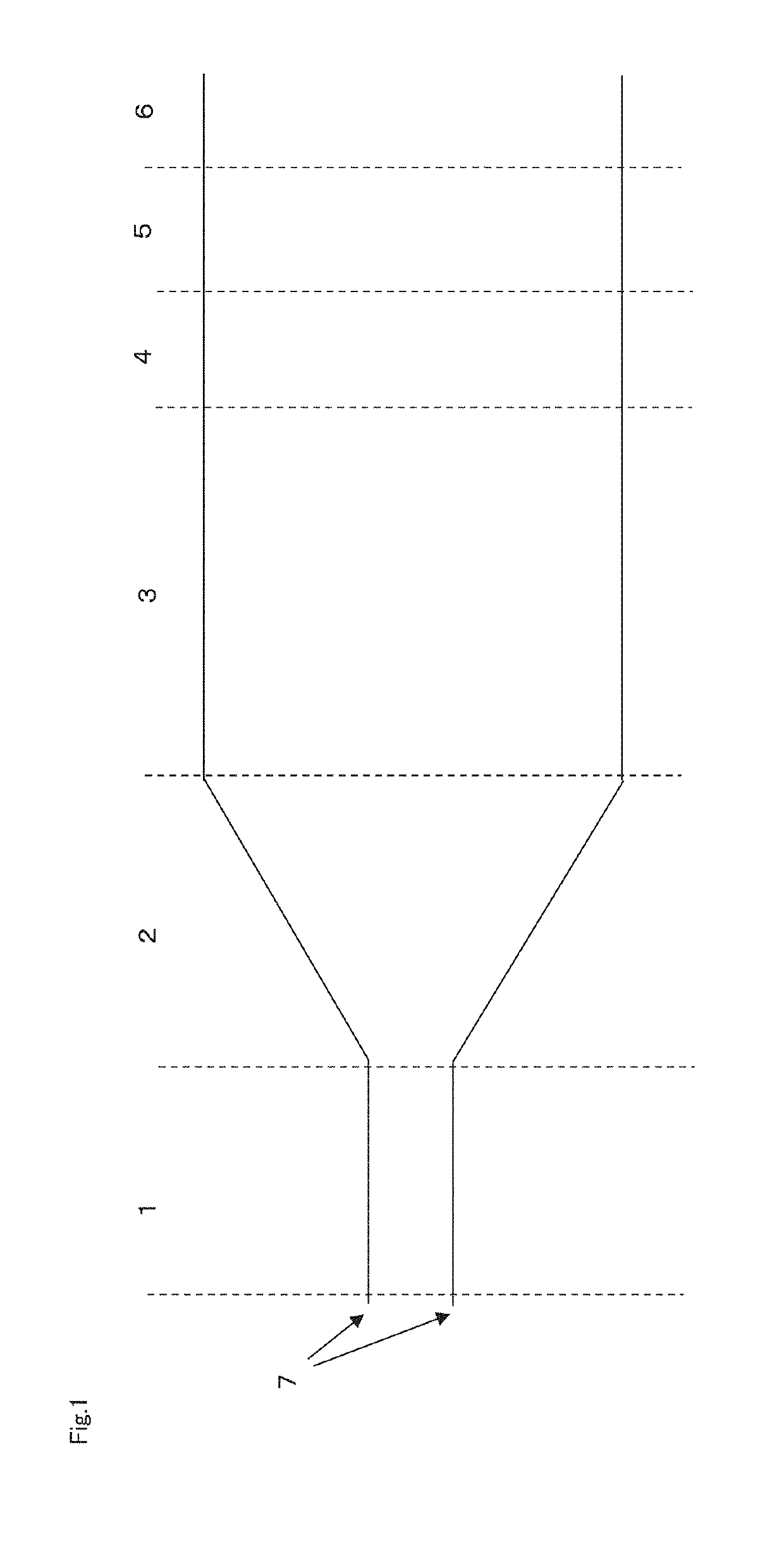Polyester film
a polypropylene film and polypropylene technology, applied in the field of polypropylene films, can solve the problems of low transparency and limited application, low elongation and breaking strength, and inconceivable use of such sheets in the field of industrial and packing films, and achieve excellent thermal dimension stability, favorable use, and excellent impact resistance strength properties
- Summary
- Abstract
- Description
- Claims
- Application Information
AI Technical Summary
Benefits of technology
Problems solved by technology
Method used
Image
Examples
example 1
[0182]As a raw material, polyethylene 2,5-furandicarboxylate manufactured by Avantium (IV=0.90) was used. The material was dried at 100° C. under reduced pressure (1 Torr) for 24 hours, and then supplied to a biaxial extruder (screw diameter: 30 mm, and L / D=25). While the resin temperature of the extruder, from a melting part of the extruder through a kneading part and a pipe of the extruder to a gear pump of the extruder, was set to 270° C., and the temperature at any subsequent pipe was set to 275° C., the resin supplied into the biaxial extruder was melt-extruded through a T die (mouthpiece) into a sheet form.
[0183]The extruded resin was cast onto a cooling drum having a surface temperature of 20° C., and allowed to adhere closely onto the surface of the cooling drum by a static electricity method to cool and solidify the resin. In this way, an unstretched film having a thickness of 300 μm was produced.
[0184]The resultant unstretched sheet was raised in film-temperature through r...
example 2
[0187]A polyester film was yielded in the same manner as in Example 1 except that the in-process relaxation heat treatment conditions were changed as shown in Table 1. The physical properties of the resultant film are shown in Table 1.
[0188]The workpiece was stretched 5 times in the MD direction at a stretching temperature of 120° C. in the MD direction, and stretched 5 times in the TD direction at a stretching temperature of 105° C. in the TD direction, so that it was possible to heighten the heat fixation temperature up to 200° C. In the physical properties of the polyester film yielded at an in-process relaxation heat treatment temperature of 180° C. and a relaxation ratio of 9% in the machine direction, the heat shrinkage rate in the MD direction was 2.0%, and that in the TD direction was 0.5%. The breaking strength in the MD direction was 249 MPa, and that in the TD direction was 247 MPa. The plane orientation coefficient (ΔP) was 0.141. The oxygen permeability was 85 mL / m2 / day...
example 3
[0189]Polyester films were yielded in the same manner as in Example 1 except that a method was used in which a cutting blade was set to the relaxation zone 5 and an end portion of the film was cut, thereby separating the film end portion. The physical properties of the resultant film are shown in Table 1.
PUM
| Property | Measurement | Unit |
|---|---|---|
| heat shrinkage rate | aaaaa | aaaaa |
| thickness | aaaaa | aaaaa |
| thickness | aaaaa | aaaaa |
Abstract
Description
Claims
Application Information
 Login to View More
Login to View More - R&D
- Intellectual Property
- Life Sciences
- Materials
- Tech Scout
- Unparalleled Data Quality
- Higher Quality Content
- 60% Fewer Hallucinations
Browse by: Latest US Patents, China's latest patents, Technical Efficacy Thesaurus, Application Domain, Technology Topic, Popular Technical Reports.
© 2025 PatSnap. All rights reserved.Legal|Privacy policy|Modern Slavery Act Transparency Statement|Sitemap|About US| Contact US: help@patsnap.com

